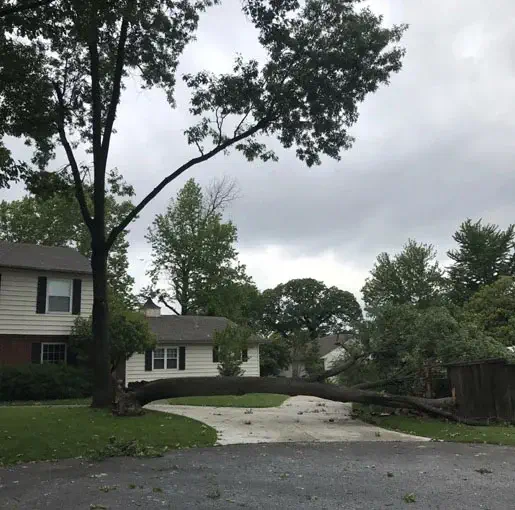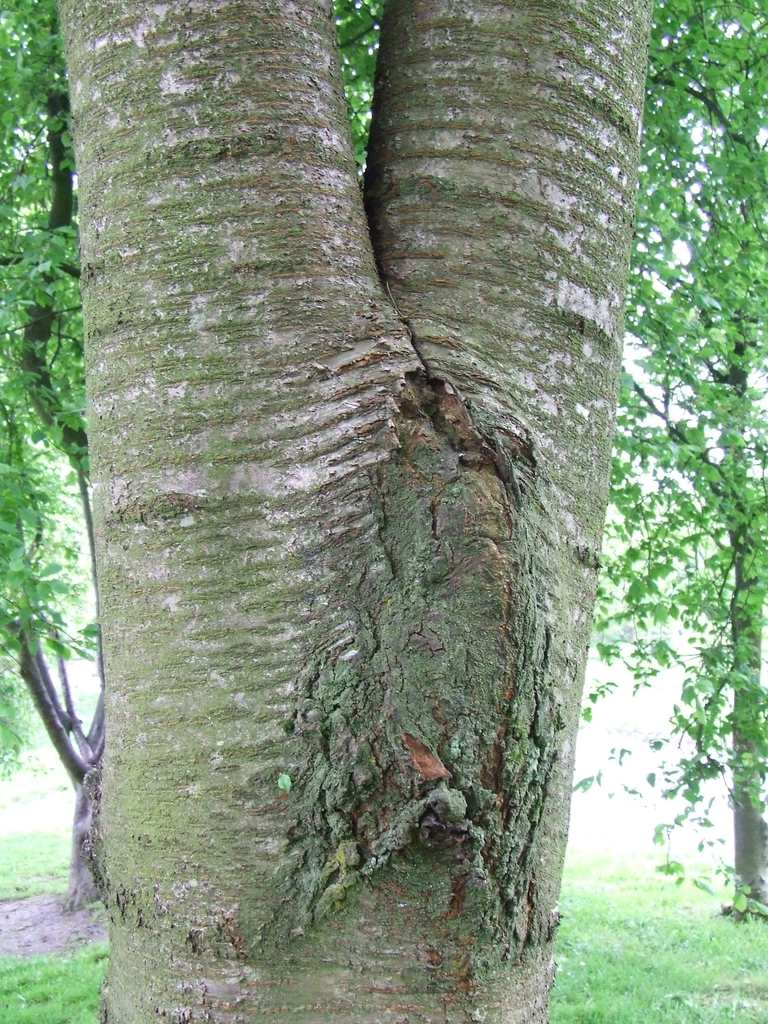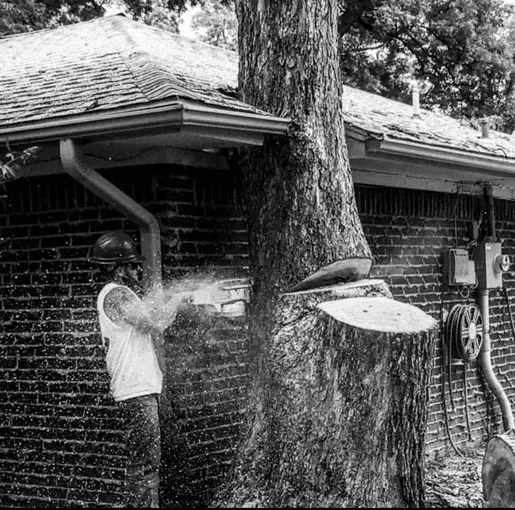CODOMINANT STEMS
The term “codominant stems” is used to describe two or more stems that emerge from the same location on the main trunk of a tree. The stems are similar in size and neither one is dominant. Codominant stems can be hazardous and often times require removal.

One of the codominant stems of this tree came crashing down during a wind and rain storm. As a result, the entire tree had to be removed.
PROBLEMS WITH CODOMINANT STEMS
Trees with codominant stems have a higher risk of failure than other trees and the risk increases as the tree grows. They are especially susceptible to storms. Ideally, trees should have one central leader and several branches aligned around the tree like spokes on a wheel. Codominant stems form when two branches nearly equal in size grow side-by-side and rub against one another and form a “u” or “v” shaped union.
Codominant stems actually inhibit the development of proper growth since both stems act as the tree’s main leader. Each stem is trying to produce a full canopy and as a result, the canopy can become overcrowded and top-heavy. Trees with codominant stems also tend to have insufficient roots as the roots on each side of the tree are only anchoring half of the tree.
A tree with codominant stems can be particularly weak if included bark is present. Included bark forms in the junctions of codominant stems and means that the stems are attached, at least partially, to the main trunk via bark rather than wood. This results in weak and under-supported branches as bark does not have the same supportive strength as wood.
REMEDIES
In most cases, trees with codominant stems will need to be removed to prevent property damage or injury. Removing one of the stems, especially from a mature tree, is typically not an option. Few trees that lose a codominant stem, whether deliberate or not, will survive as the loss of such a large stem can cause a massive wound that the tree is unable to recover from. In some cases, if the tree is healthy and stable, proper pruning and/or cabling can be done to help maintain its structural integrity. Tree cabling can provide additional support by holding the codominant stems together with flexible steel cables. Trees with codominant stems should be inspected regularly by an ISA Certified Arborist so that corrective actions can be taken before it is too late.

This structural integrity of this tree has been undermined due to the presence of included bark.

This Pecan with large codominant stems was removed by Jake and the crew.
CONTACT A TULSA CERTIFIED ARBORIST
Contact Jake, an ISA Certified Arborist, at TREES BY JAKE in Tulsa, OK for an inspection of your trees with codominant stems. With over a decade of experience in the Tulsa tree care industry, Jake can make recommendations, such as removal, trimming, or cabling, that can help reduce the risk of failure. Call or text us today at 918-500-9955 and check us out on social media on Facebook, Instagram, Twitter!
Contact Your
Tulsa Tree Service
TREES BY JAKE has been providing tree removal services in Tulsa for over a decade. Jake is a Tulsa Certified Arborist and we have a variety of equipment to safely and efficiently remove trees. Call or text us today for your free estimate at 918-500-9955 and don’t forget to check us out on Facebook, Instagram, and Twitter!